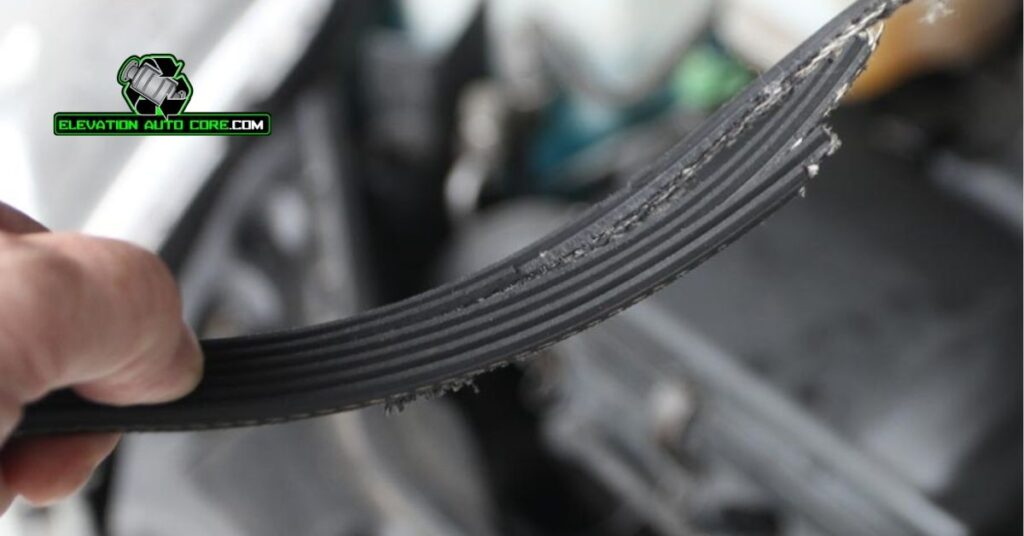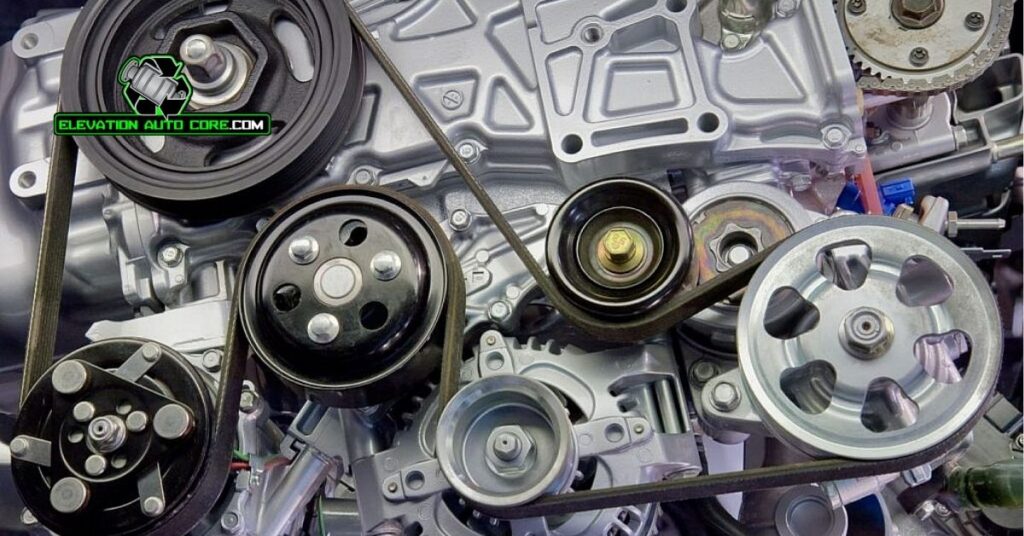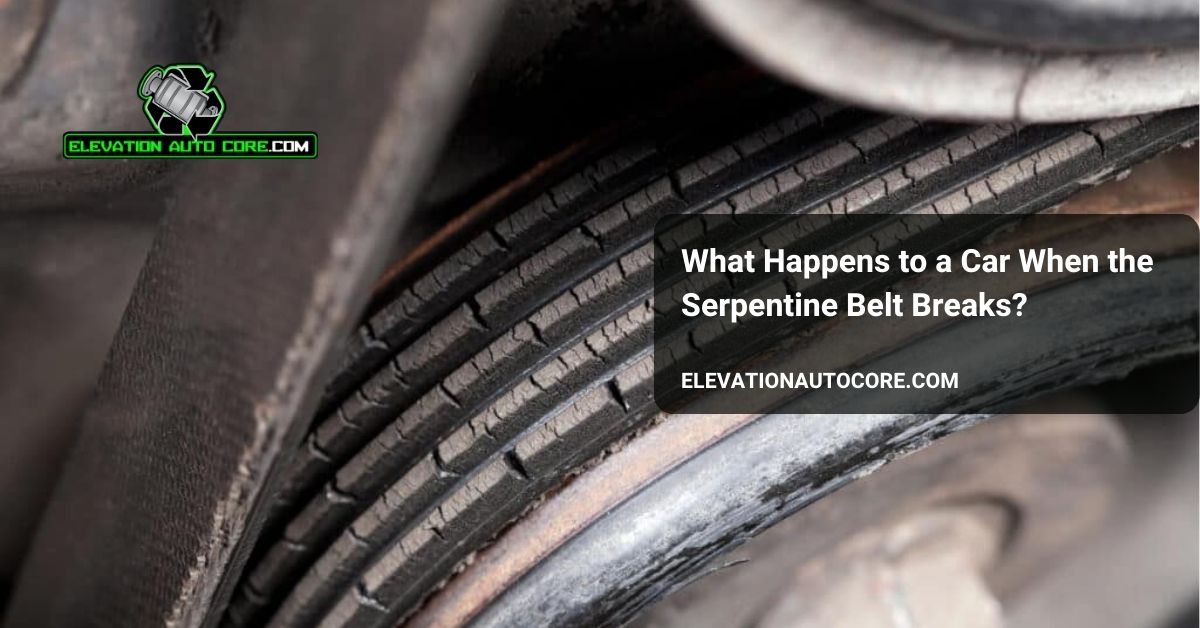What happens to a car when the serpentine belt breaks? This critical component powers essential systems like the alternator, power steering, and air conditioning. Without it, your car’s performance can plummet, leaving you stranded. Keep reading to understand the risks and how to spot the warning signs before it’s too late.
Understanding The Serpentine Belt

The serpentine belt plays a crucial role in your car’s functionality. It connects multiple components and ensures essential systems operate smoothly.
What Is A Serpentine Belt?
A serpentine belt is a long, continuous rubber belt designed to run through a series of pulleys. It transfers mechanical power to key components, such as the alternator, water pump, power steering pump, and air conditioning compressor. The belt’s durable construction typically consists of reinforced rubber to withstand constant use and high engine temperatures.
Maintaining its proper tension is essential, as a loose or damaged belt can slip off or wear out prematurely. Vehicles commonly use a tensioner pulley to keep the belt securely in place and at the correct tension.
Importance Of The Serpentine Belt In A Car
This belt ensures several critical systems in your car work in unison. It powers the alternator, which charges the battery and supplies electricity to various electrical systems. The air conditioning compressor depends on it to regulate cabin temperature, while the power steering pump relies on it for steering assistance. In many vehicles, the water pump, which prevents the engine from overheating, is also driven by it.
A failing or broken serpentine belt can lead to immediate issues, such as loss of power steering, engine overheating, or the inability to operate accessories. Without it, most of your car’s essential systems stop functioning, underscoring its significance to your vehicle’s overall performance.
Common Effects Of A Broken Serpentine Belt

A broken serpentine belt directly impacts a car’s essential systems. You might notice multiple symptoms immediately after the belt fails.
Loss Of Power Steering
Power steering becomes inoperable when the serpentine belt breaks. You’ll find it difficult to turn the steering wheel, especially at low speeds. Heavy steering increases the risk of accidents since vehicle control becomes harder.
Overheating Of The Engine
Engine cooling halts without the belt driving the water pump. Rising temperatures may cause the engine to overheat, leading to serious damage if you keep driving. The risk of a cracked cylinder head or ruined engine increases when overheating persists.
Failure Of Electrical Components
Electrical systems like lights and radio stop working when the alternator loses power. As the battery drains, the car might struggle to start or stall altogether. A sudden power failure while driving poses safety concerns and leaves you stranded.
Warning Signs Before A Break
Detecting early issues with the serpentine belt can prevent costly repairs and unexpected breakdowns.
Squealing Or Chirping Noises
Unusual sounds from the engine area often indicate a belt issue. High-pitched squealing or chirping typically occurs during startup, acceleration, or when using accessories like air conditioning. Misalignment or tension problems frequently cause these noises. Ignoring them increases the risk of complete failure.
Visible Wear And Tear On The Belt
Physical damage on the serpentine belt points to imminent failure. Cracks, fraying edges, or glazing on the surface serve as clear indicators. Regular inspection, especially during maintenance, reveals these issues early. A worn belt reduces efficiency and weakens critical system performance.
Dashboard Warning Lights
Illuminated warning lights highlight malfunctioning components tied to the belt. The battery light signals alternator problems, while the temperature warning indicates cooling system issues. Immediate attention to these alerts prevents overheating or electrical disruptions, both of which are consequences of a failing belt.
Immediate Actions To Take

A broken serpentine belt can render your car inoperable, so knowing what steps to take is essential. Acting quickly and correctly reduces risks and prevents unnecessary damage.
Safely Pulling Over
Find a safe spot to stop your vehicle as soon as you notice something’s wrong. If steering becomes difficult or the engine starts overheating, reduce your speed and use hazard lights to alert others. Avoid driving far, as continued operation may cause severe damage to the engine. Choose a location away from traffic, such as a roadside shoulder or parking lot, to ensure your safety.
Avoiding Further Damage
Turn off the engine immediately after stopping to prevent overheating. Check the temperature gauge and look for signs like smoke near the hood, which could indicate a rise in engine temperature. Keep the car off, as driving without a functioning serpentine belt risks damaging components like the water pump or alternator. Avoid opening the radiator cap while the engine is hot.
Contacting A Mechanic
Call a professional mechanic to inspect and address the issue instead of attempting to drive further. Provide accurate details about the symptoms, such as stalled electrical systems or loss of power steering, to give them context. Stay with your car until help arrives unless it’s unsafe. If towing is needed, arrange for transportation to a nearby repair shop to prevent prolonged exposure to engine stress.
Prevention And Maintenance Tips

Consistent care of the serpentine belt ensures your car operates smoothly and prevents unexpected breakdowns. Prioritize regular checks and proactive actions to extend the belt’s lifespan and avoid costly repairs.
Regular Belt Inspections
Inspecting the serpentine belt periodically helps identify damage early. Look for signs such as cracks, fraying, or glazing on the belt’s surface. Check for proper alignment and tension to prevent premature wear. Pay special attention to unusual squealing noises, as they often signal belt issues.
Following Manufacturer Guidelines
Use your vehicle’s manual to follow exact maintenance intervals for the serpentine belt. Adhering to these guidelines ensures the belt meets performance standards recommended for your car model. Replace any components, such as the tensioner pulley, at the intervals suggested by the manufacturer.
Replacing The Belt Proactively
Replace the serpentine belt as part of scheduled maintenance to avoid unexpected failure. Many belts last between 50,000 and 100,000 miles, so plan for replacement within this range. If your car operates in harsh conditions, like extreme temperatures or frequent stop-and-go traffic, consider replacing the belt sooner. Always opt for high-quality replacement parts to ensure longevity.
Conclusion
A broken serpentine belt can bring your car to a standstill, affecting critical systems and potentially causing costly damage. Staying proactive with regular inspections and addressing warning signs early can save you from unexpected breakdowns. Prioritize preventive maintenance and always follow your vehicle’s recommended service intervals. When issues arise, acting quickly and seeking professional help ensures your car stays reliable and safe on the road.

